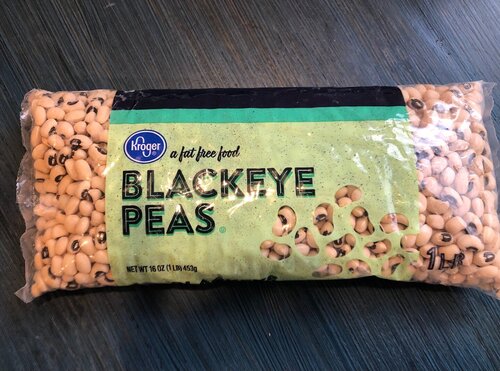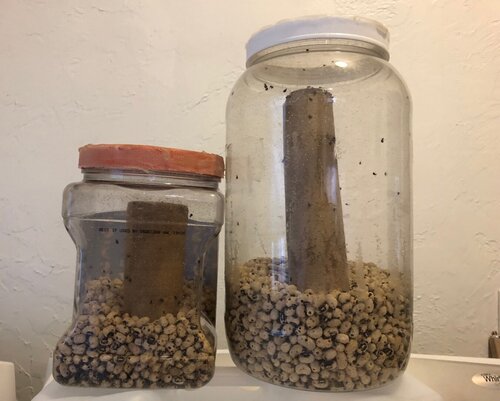I really like Bean Beetles, Callosobruchus maculatus, as a feeder for baby chameleons in combination with other feeders. I have used them to feed clutches of Jackson's, Hoehneli and know panther breeders who use them with success as well. I will discuss their care and use in the form of a pros and cons list. If you desire more information look for links at the bottom of this blog for more detailed information .
Pros
- They are an inexpensive feeder. For approximately $1.50 you can buy one pound of black eyed peas or mung beans to raise several hundred beetles. Compared to the 4-7 cents each per cricket beetles are a bargain. It is not difficult to propagate one culture of beetles into another endlessly. Ten adults of each sex are all it takes to make a container of beans into a new culture. You shouldn't need to buy more as long as you maintain your cultures.
- Their feed is readily available at the grocery store, online if you want volume and even at Walmart for the Walmart shoppers among us. They are fed, breed and live in black eyed peas, mung beans and adzuki beans. All are available at grocery stores but for mung and adzuki you may have to go to more upscale or trendy markets or look in the Asian foods section. It may be worth it to look for the mung beans as the dendroboard suggests that they supply more vitamin A if fed mung beans.

- If feeders are like fishing lures,"it's all in the action" then bean beetles are great lures. Once they start moving they rarely stop moving. They are the energizer bunny of feeders. They will get your little chameleons attention, sometimes by running right across them.
- They make a very satisfying crunch when they are eaten. I can hear my shyer babies eating even when I can't see them. My baby cages are densely planted so hearing them eat is very reassuring.
- They are unlikely to infest your house unless you store lots of beans in hot cupboards. They willl get into unopened bean bags but without enough heat they don't breed well. *They are an agricultural pest in warm climates see more under cons.
- All the heat they need to breed can be supplied by your linear lights. There is no need to buy heat mats if you have space on top of your lights. The rising heat from my cages is more than adequate. They will reproduce quickly at 86 degrees F, as little as 3-4 weeks per generation. If you want to slow them down just keep them at 70 F and they will survive but double the generation time.
- They require no watering whatsoever. If fact adding water or high humidity will ruin the culture.
- They make nice enrichment feeders for some adult chameleons. Many of my adults will eat them and it keeps them busy longer eating ten very small feeders rather than one large one.
- They can climb anything. ANYTHING! I have waxed surfaces to keep them down nothing works.
- Some of them can fly. They aren't great fliers but in over crowded cultures some will develop flight. A lot like Orville and Wilbur Wright at Kitty Hawk, short but definitely flight.
- Some are small enough to get thru screen. Most are too large but not all. If you keep them in deli cups you need the pinhole lids not screen tops.
- They need a deli cup sized container or larger and toilet paper rolls to climb for collection. TP being the commodity it is today this might be a problem. I glue paint strainers on top of my random reused jar lids.

- Their containers need to be spun daily otherwise the beans at the bottom get moist and can inhibit or destroy the culture.
- They need fresh beans every three weeks for best results and to keep things going. Adding beans seems to slow a culture down a little I'm not sure why.
- *They are an agricultural pest in warm climates and should be disposed of by freezing for 72 hours before putting in the regular trash. So freezing temperatures will kill your colonies. You cannot have them in Hawaii.
- Cultures are available commercially for ~10-20$. I don't know if that is a pro or a con. Just don't get conned into buying the food as you can get it almost anywhere.
https://www.beanbeetle.org/handbook/
https://www.carolina.com/teacher-resources/Interactive/life-cycle-of-bean-beetles/tr25103.t
Here is a culture in mung beans.
My mung bean cultures produced beetles that look larger and darker than those from the black eyed peas.


